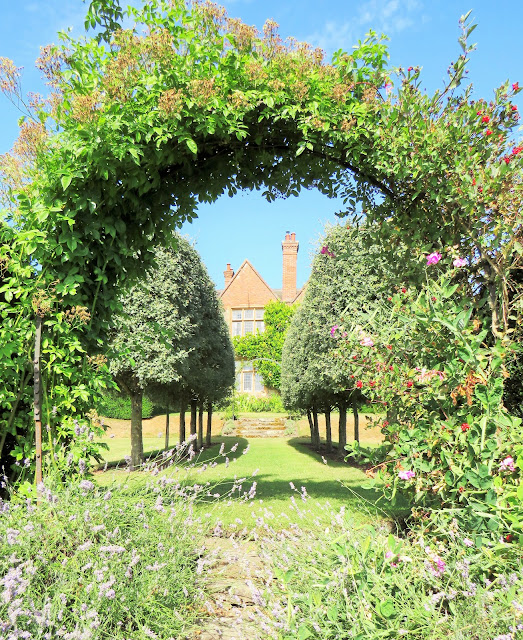Felley Priory
I enjoyed a delightful trip to Felley Priory; although the house is a private home, the gardens are open to the public Tuesday to Friday all year and the 1st and 3rd Sundays of each month. Even though we have had one of the hottest and driest summers for many years, the 2 1/2 acre gardens were an absolute delight. The herbaceous borders are amongst the most colourful you will find anywhere and the topiary is exquisite - some of the best I have ever come across.
The Augustinian Priory was founded in 1156 on the site of an earlier chapel served by a Hermit known as Brother Robert. The Priory wasn't very big, having only half a dozen monks and a simple church with just a nave and chancel. After the Dissolution of the Monasteries in 1535, most of the Priory was destroyed, but a large amount of its original masonry was used to build the house now known as Felley Priory. Four columns attributed to the original priory have survived and are used as gate posts, as are the priory's precinct wall and fishpond. There are examples of Tudor craftsmanship, such as the chimney on the west side of the house and carvings in the brickwork of a lion and a unicorn. During the Civil War the house was used as a garrison for the Royalist army, after its owner was condemned to death and his lands were seized for signing King Charles 1st death warrant (although he was never actually killed). In Victorian times, the stone end of the house was added together with the terraced gardens and the large pond.


There are several authentic doorways leading through to other parts of the garden - such as the Rose garden, or the Arboretum and shrubbery.
This area is known as The White Garden - a stunning patio with benches to sit on, surrounded by all manner of white plants - one of my favourite parts of the garden.
Back onto the immaculately kept lawned terraces, you will find box hedges containing colourful planters that can be changed each year - what a great idea!
The colourful borders contain many unusual or rare plants - so many that you would like to buy and take home with you. They are looked after so well, the colour schemes are perfect and when I visited most of the plants were still flowering profusely.


There are several different pergolas and arches throughout the garden.

The shaped topiary is absolutely exquisite - there didn't seem to be one leaf out of place. I don't think I have ever seen such perfect shaping.
At the bottom of the garden is the pond - there was a pond here from the 12th century.
A final look over the perfectly kept lawns and hedges, over to the golden fields in the distance - before heading off for some refreshments.

The Farmhouse Tea Room is a great place to start or finish your trip to the gardens - or both! It not only offers drinks and delicious homemade cakes, but you can also have a breakfast or light lunch. There are seats both inside or outside - where you can take in the view of the surrounding countryside.
The rear view of the house is as fascinating as the front. The Chaworth-Musters family have owned the house since 1822, and the gardens as they are today have been created mainly by Major Robert Chaworth- Musters and his wife since 1973.
Throughout the year there is always something interesting to see in Felley's gardens; from an orchard full of daffodils every April, a display of bluebells every May, the magnificent summer borders as I have just seen, plant fairs at various times - as well as frosty times in the snowy winter months. Can you imagine what the topiary looks like with icicles and snow on! Such a different variety of plants are grown, so there is always something to admire; many of which are available to buy at the adjoining nursery at very reasonable prices.
Check their website - www.felleypriory.co.uk
Lynne
Check their website - www.felleypriory.co.uk
Lynne
Please check out my other blogs:-




























No comments:
Post a Comment